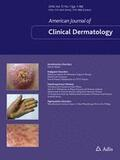 Celso Lopes, Virginia Fernandes Moça Trevisani & Tamara Melnik
Celso Lopes, Virginia Fernandes Moça Trevisani & Tamara Melnik
Abstract
Background
Various phototherapy methods are used to treat vitiligo; however, the recent emergence of new devices has heightened debate concerning the best treatment method.
Objective
We aimed to systematically review and meta-analyze published data comparing the efficacy and adverse effects of monochromatic excimer lamps versus excimer laser and narrowband ultraviolet B (NB-UVB) in treating vitiligo.
Methods
A systematic search of PubMed, EMBASE, LILACS, Cochrane Central Register of Controlled Trials (CENTRAL), and clinical trials registries identified randomized controlled trials that included vitiligo patients, regardless of age, sex, or study language. We evaluated studies comparing excimer lamps with excimer laser or NB-UVB phototherapy.
Results
The review included six studies (411 patients, 764 lesions). No study found significantly different efficacy between excimer lamps and excimer laser using the outcomes of ≥50 % repigmentation [risk ratio (RR) = 0.97, 95 % confidence interval (CI) 0.84–1.11] and ≥75 % repigmentation (RR = 0.96, 95 % CI 0.71–1.30). Likewise, no study found significant differences between excimer lamps and NB-UVB (RR = 1.14, 95 % CI 0.88–1.48 for ≥50 % repigmentation; RR = 1.81, 95 % CI 0.11–29.52 for ≥75 % repigmentation). Adverse effects were mild, including pruritus, burning sensation, and dryness, none of which interrupted treatment.
Conclusions
To our knowledge, this is the first systematic review of the efficacy and safety of excimer lamp treatment for vitiligo. Excimer lamps, excimer laser, and NB-UVB are all safe and effective in repigmentation of vitiligo lesions. Safety, effectiveness, and cost are considerations when choosing treatment.


